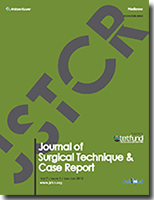 |
January-June 2015
Volume 7 | Issue 1
Page Nos. 1-27
Online since Wednesday, June 29, 2016
Accessed 7,779 times.
PDF access policy
Full text access is free in HTML pages; however the journal allows PDF access only to users from NIGERIA, developing countries and paid subscribers.
EPub access policy
Full text in EPub is free except for the current issue. Access to the latest issue is reserved only for the paid subscribers.
|
| |
|
|
Show all abstracts Show selected abstracts Add to my list |
|
| CASE REPORTS |
|
|
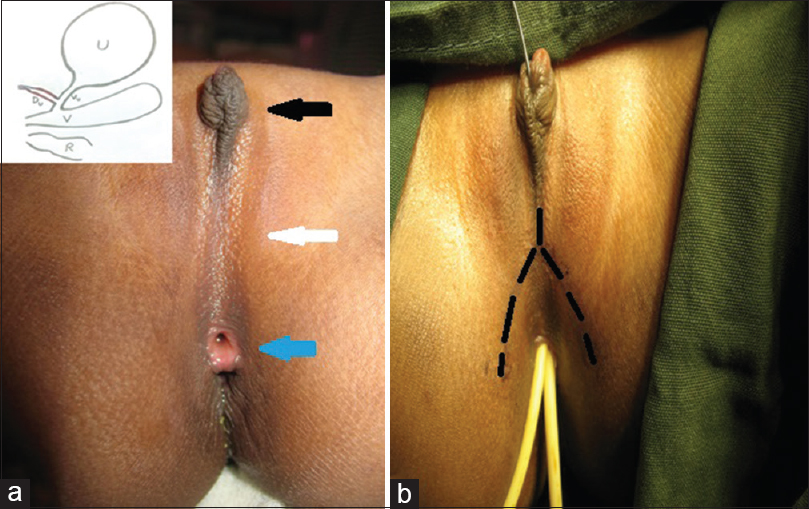  |
Female urethral duplication: Rare anomaly with unusual presentation |
p. 1 |
Shailesh Solanki, M Narendra Babu, Vinay Jadhav, Gowrishankar , S Ramesh
DOI:10.4103/2006-8808.184939 PMID:27512541Urethral duplication (UD) in females is a rare congenital anomaly and requires a high degree of clinical suspicion for diagnosis. The preoperative evaluation requires thorough investigations to delineate anatomy which is imperative for surgical reconstruction to provide excellent functional and cosmetic outcome. We describe the successful management of a 6-year-old girl with UD (presented as ambiguous genitalia and urinary incontinence) along with a review of pertinent literature. |
| [ABSTRACT] [HTML Full text] [PDF] [Mobile Full text] [EPub] [PubMed] [Sword Plugin for Repository]Beta |
|
|
|
|
|
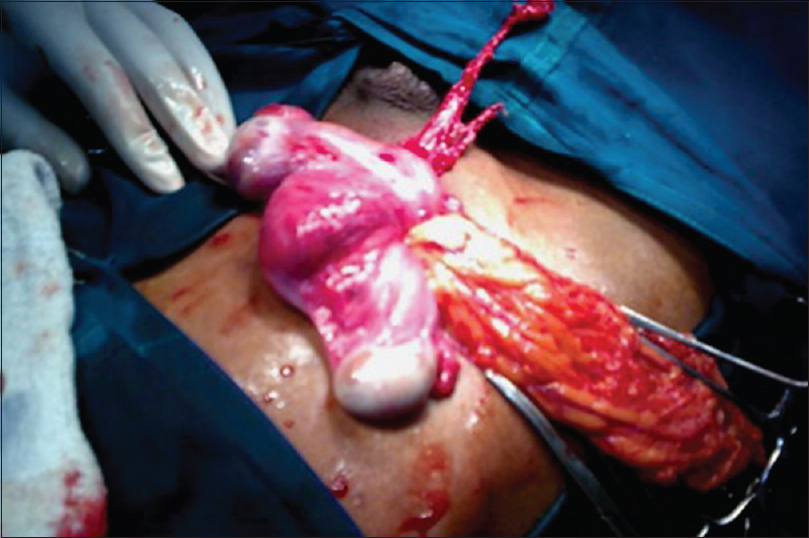  |
Persistent mullerian duct syndrome with transverse testicular ectopia |
p. 4 |
P Naresh Kumar, Kandgal Venugopala
DOI:10.4103/2006-8808.184940 PMID:27512542Persistent Mullerian duct syndrome (PMDS) is a rare form of male pseudohermaphroditism characterized by the presence of Mullerian duct structures in a normal male with 46, XY karyotype. Transverse testicular ectopia (TTE) is rare form of testicular ectopia in which two testes are located on one inguinal side. The opposite scrotum is empty. PMDS with TTE is rare. We report a case of PMDS with TTE discovered during surgery for a right inguinal hernia in a 25-year-old male. |
| [ABSTRACT] [HTML Full text] [PDF] [Mobile Full text] [EPub] [PubMed] [Sword Plugin for Repository]Beta |
|
|
|
|
|
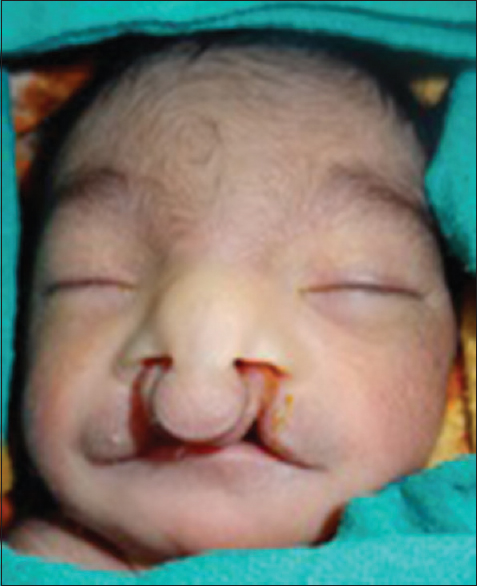  |
Single visit feeding appliance for 1-day-old neonate with cleft palate using safe dental putty-gauze hybrid impression technique for maxillary impression |
p. 7 |
Manu Rathee
DOI:10.4103/2006-8808.184938 PMID:27512543Cleft lip and palate is one of the most common craniofacial anomalies of humans. Intraoral impression making is the first clinical step in the fabrication of feeding appliance for infants with oro-nasal communication. It is difficult to control the flow of the impression material in the cleft area and undercuts in a child patient. This clinical report presents a simple and safe impression technique for maxillary impression making in neonates and infants with cleft palate. A gauze piece was used to confine the impression material during functional movements of sucking while impression making in an awake child to avoid the risk of aspiration or swallowing. |
| [ABSTRACT] [HTML Full text] [PDF] [Mobile Full text] [EPub] [PubMed] [Sword Plugin for Repository]Beta |
|
|
|
|
|
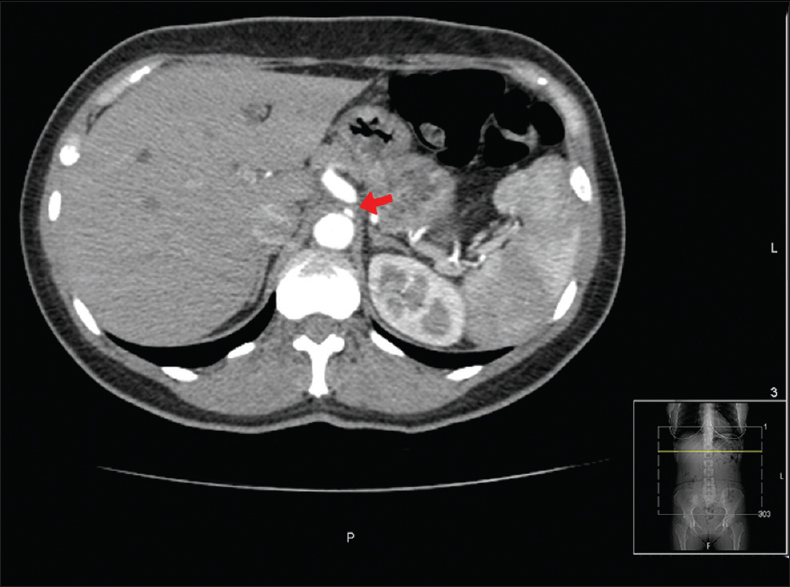  |
A Rare cause of postprandial abdominal pain |
p. 12 |
Jesse Zhen Cheng Lee, Kamal Aryal
DOI:10.4103/2006-8808.184936 PMID:27512544A 49-year-old woman with medical history of polymyalgia rheumatica presented with 3 weeks history of epigastric pain worse after meal. Gallstones, peptic ulcer, bowel ischemia, bowel obstruction, gastroesophageal reflux disease, chest pathology, etc., were excluded from the study. Computerized tomography showed a short stenotic segment at coeliac trunk with poststenotic dilatation of 8 mm. Ultrasound scan showed peak velocity of 326 cm/s at the coeliac artery. Diagnosis of median arcuate ligament syndrome was made. |
| [ABSTRACT] [HTML Full text] [PDF] [Mobile Full text] [EPub] [PubMed] [Sword Plugin for Repository]Beta |
|
|
|
|
|
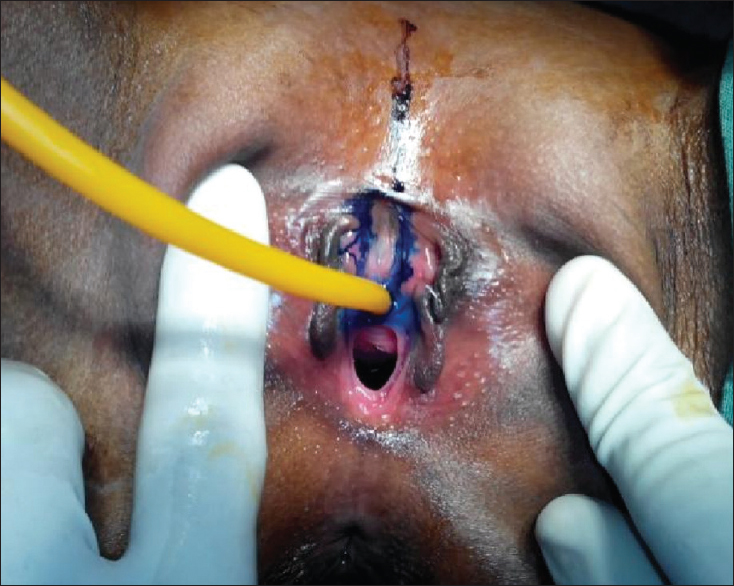  |
Female urethral anomalies in pediatric age group: Uncovered |
p. 14 |
Nikhil A Patil, Siddangouda B Patil, Vinay S Kundargi, Ashok N Biradar
DOI:10.4103/2006-8808.184937 PMID:27512545Female urethral anomalies such as epispadias and hypospadias have been rarely reported in the literature. Clinical diagnosis of female urethral anomalies is significant for management. Diagnosis may be missed leading to mismanagement of the clinical condition. Herein, we report a case of female epispadias and hypospadias managed by us at Tertiary Care Center. |
| [ABSTRACT] [HTML Full text] [PDF] [Mobile Full text] [EPub] [PubMed] [Sword Plugin for Repository]Beta |
|
|
|
|
|
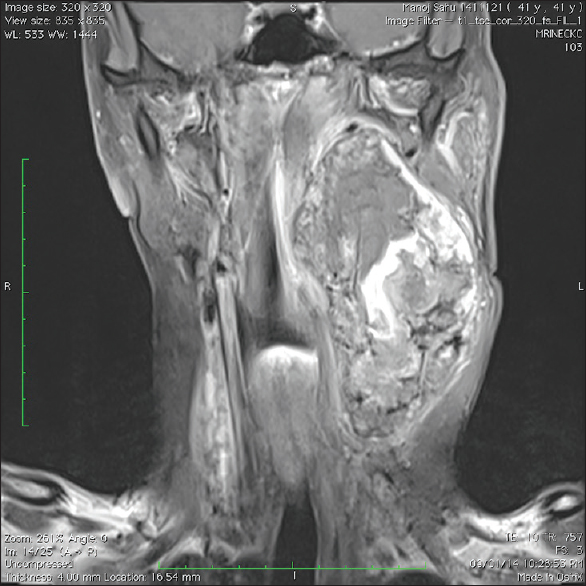  |
Malignant transformation of vagal nerve schwannoma in to angiosarcoma: A rare event |
p. 17 |
Sangeet Kumar Agarwal, Manish Munjal, Devinder Rai, Seema Rao
DOI:10.4103/2006-8808.184941 PMID:27512546Schwannomas are benign, rare peripheral nerve sheath tumors that occur in the head and neck region. Some physicians opt to closely observe cases of schwannoma of the neck on an outpatient basis rather than to perform radical surgery. However, there is a possibility, albeit rare, of malignant transformation of a benign schwannoma. Here, we are reporting the first case from the Indian subcontinent which was transformed into the angiosarcoma from benign vagal schwannoma over a long period. A 47-year-old male patient complaining of left sided neck swelling since last 12 years, swelling was insidious in onset, gradually progressive very slowly. In last 2 months, the size of the swelling was suddenly increased. On examination, there was an approximately 6 cm × 6 cm of size, firm, nodular, well-defined, nontender swelling in the left lateral part of the neck. Fine-needle aspiration cytology (FNAC) revealed paraganglioma and magnetic resonance imaging demonstrated very clearly a tumor, its morphology, and its relation to the surrounding structures, the tumor was thought to be a vagal schwannoma. Surgery was done, and the whole of the tumor was removed in toto. On final histopathological diagnosis, the tumor was proved to be angiosarcoma developed from vagal schwannoma. Postoperative chemotherapy was given but due to distant metastasis, the patient died. Long standing neck masses can convert into malignancy as in our case, therefore, work up of the patient should be done properly. Multiple FNAC should be done because single FNAC can give the false negative result as in our case. This was our diagnostic drawback not to do multiple computed tomography guided FNAC. |
| [ABSTRACT] [HTML Full text] [PDF] [Mobile Full text] [EPub] [PubMed] [Sword Plugin for Repository]Beta |
|
|
|
|
|
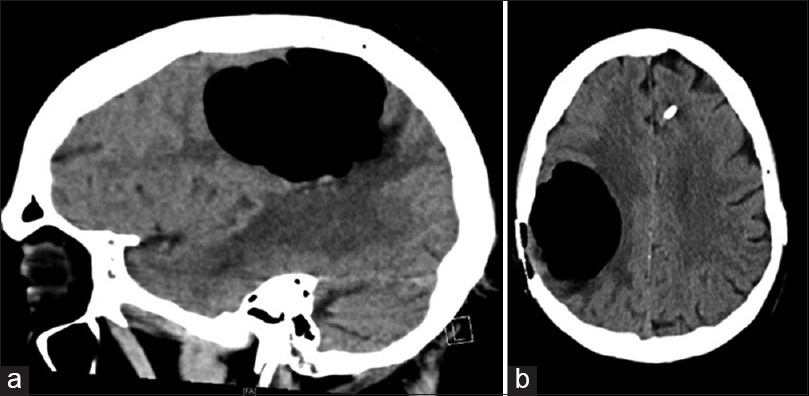  |
Intraoperative development of tension pneumocephalus in a patient undergoing repair of a cranial-dural defect under nitrous oxide anesthesia |
p. 20 |
Mansher Singh, Viren S Vasudeva, Arturo J Rios Diaz, Ian F Dunn, Edward J Caterson
DOI:10.4103/2006-8808.184942 PMID:27512547Rapid buildup of gas within the cranial vault can result in a life-threatening condition known as “tension pneumocephalus,” necessitating immediate surgical intervention. Nitrous oxide (N2O), a commonly used inhaled anesthetic, is associated with the development of tension pneumocephalus and its role in neurosurgical procedures has been debated in the literature. We present a case of tension pneumocephalus with preexisting pneumocephalus secondary to the usage of N2O as an inhaled anesthetic. Included is a literature review of studies discussing the role of N2O in the development of tension pneumocephalus. N2O is associated with tension pneumocephalus especially in the setting of preexisting pneumocephalus. Tension pneumocephalus can manifest as Cushing response and immediate decompression is life-saving. Nitrous oxide should be used cautiously in neurosurgical procedures, especially with preexisting pneumocephalus. |
| [ABSTRACT] [HTML Full text] [PDF] [Mobile Full text] [EPub] [Citations (1) ] [PubMed] [Sword Plugin for Repository]Beta |
|
|
|
|
|
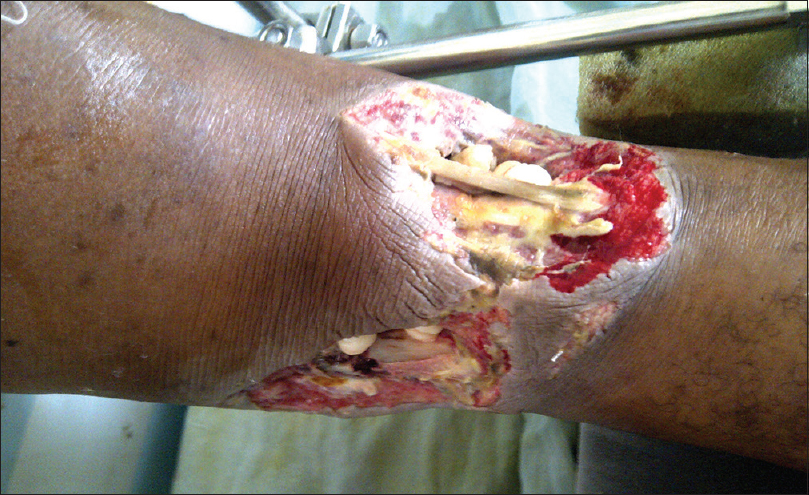  |
Propeller flap for complex distal leg reconstruction: A versatile alternative when reverse sural artery flap is not feasible |
p. 23 |
Samuel A Ademola, Afieharo I Michael, Femi J Oladeji, Kefas M Mbaya, O Oyewole
DOI:10.4103/2006-8808.184943 PMID:27512548Reverse sural artery fasciocutaneous flap has become a workhorse for the reconstruction of distal leg soft tissue defects. When its use is not feasible, perforator-based propeller flap offers a better, easier, faster, and cheaper alternative to free flap. We present our experience with two men both aged 34 years who sustained Gustilo 3B injuries from gunshot. The donor area for reversed sural artery flap was involved in the injuries. They had early debridement, external fixation, and wound coverage with perforator-based propeller flaps. The donor sites were covered with skin graft. All flaps survived. There were minor wound edge ulcers due to the pressure of positioning that did not affect flap survival and the ulcers healed with conservative management. Perforator-based propeller flap is a versatile armamentarium for reconstruction of soft tissue defects of the distal leg in resource-constrained settings, especially when the donor area for a reverse flow sural flap artery is involved in the injury. |
| [ABSTRACT] [HTML Full text] [PDF] [Mobile Full text] [EPub] [PubMed] [Sword Plugin for Repository]Beta |
|
|
|
|
|